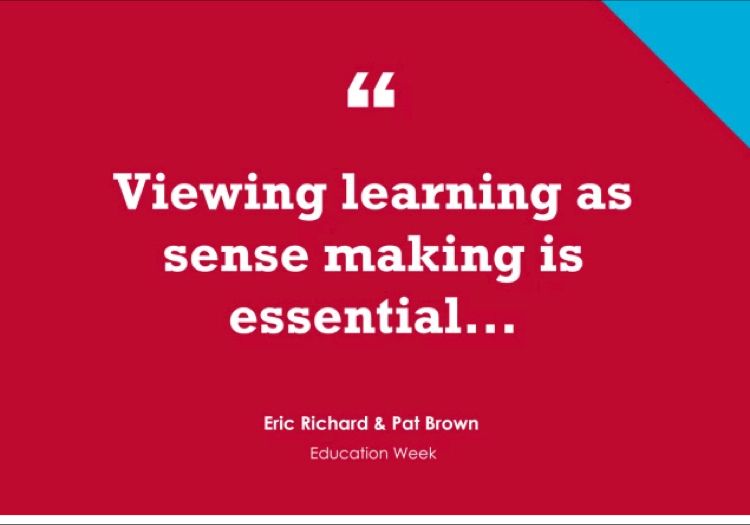Sense Making

Sense Making
Dr. Pat Brown and I continue to collaborate on ideas to how to improve education and student learning. I always enjoy working with Pat, because we bring together overlaps from the science and world language classrooms. We always look at how we can use students’ ideas about language, science, discourse, and communication to develop conceptual understanding and new language learning. This includes looking at sequencing instruction so students have “explore-before-explain” experiences where they engage in active meaning-making that builds on prior knowledge.
Along with the idea of sequencing, we explore the fact that all students come to school as knowers. That is, even before being taught anything, they come to our classes with unique assets such as their everyday experiences interacting with the natural world, curiosities, interests, cultures, and abilities. We then ask ourselves how we can leverage these assets to understand their incoming ideas better and use them to create everyday classrooms that engage students. We call it ‘Sense Making’.
Pat and I were recently published in EducationWeek where we explain why a sense making approach to instruction is so beneficial for students. You can see our full article here (scroll down to find ‘Sense Making’)
Here is a summary of our article:
- It emphasizes the importance of leveraging students’ existing knowledge and assets to create meaningful learning experiences. Sense-making and active learning are key in a technology-driven world that values critical thinking and problem-solving skills.
- The relationship between cognition and emotions is highlighted. Instructional practices that engage student thinking and draw on firsthand experiences promote pleasure, satisfaction, and motivation. On the other hand, stress-inducing practices activate the reactive brain and hinder learning.
- The affective filter hypothesis is also introduced and suggests that students screen information based on the perceived stress of learning, and language learning is influenced by students’ perception of the learning environment and the risk-reward balance in communication.
- Two big ideas are presented.
- The first emphasizes the importance of an instructional sequence that supports students in taking intellectual risks. The PSOE approach (Predict, Share, Observe, and Explain) promotes sense-making by engaging students’ interest, stimulating ideas, and refining understanding through conversation and firsthand experiences.
- The second big idea focuses on productive discourse and writing, emphasizing the need for a balance between established and new ideas. Students should feel that they are part of a collective culture in the classroom, and educators must make these skills compelling, engaging, collaborative, and accessible. Support for students in improving their writing and discourse abilities is crucial to avoid frustration and disengagement.
- The first emphasizes the importance of an instructional sequence that supports students in taking intellectual risks. The PSOE approach (Predict, Share, Observe, and Explain) promotes sense-making by engaging students’ interest, stimulating ideas, and refining understanding through conversation and firsthand experiences.
- Thus, when we – educators – create an environment that allows students to grow in confidence and freely express their thoughts, the affective filter is lowered, making discourse and writing enjoyable and productive. Students become more comfortable with these skills and actively engage in the learning process – in all academic subjects.
Please share your thoughts and ideas below in the comment section! I look forward to engaging with you on this topic.
Mach’s gut!
P.S. Here is a short video where Pat and I introduce and promote our session at that Innovate 2023 Conference that deals with this idea.